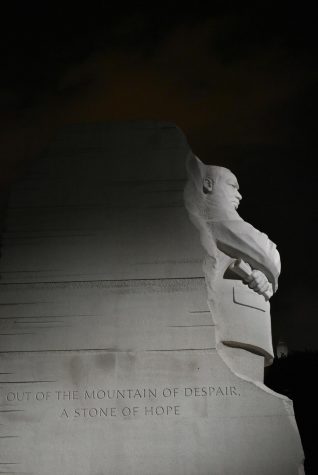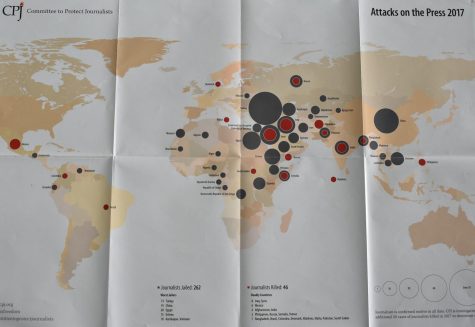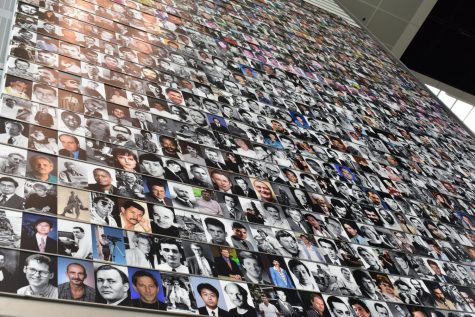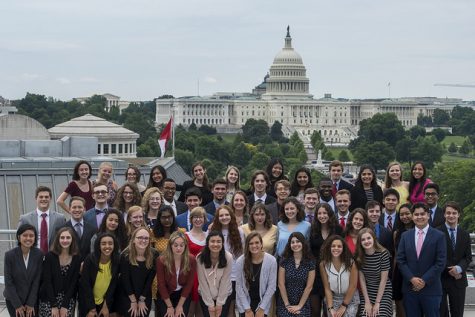Student journalists carry torch of truth
I spent five amazing days this summer in our nation’s capital with fifty other students from across America that share the same passion for journalism that I have. The week was full of breathtaking moments: seeing the Washington Monument for the first time as my plane descended into Ronald Reagan Airport, watching Chuck Todd masterfully interview KellyAnne Conway on “Meet the Press,” meeting Freedom Riders from the Civil Rights movement, touring the grandeur of the Senate and House press boxes and exploring the awe-inducing monuments and memorials of Washington, D.C. and, of course, interacting with the other free spirit scholars. I met passionate individuals from across the country whose passion for journalism was inspired by different experiences from their backgrounds.
I had the honor of representing Colorado at the Al Neuharth Free Spirit and Journalism Conference in Washington, D.C. The conference was founded in 1999 to honor USA Today founder Al Neuharth’s legacy and encourage high school journalists to stick with the field in the pioneering way that Mr. Neuharth did.


The Martin Luther King Memorial.

The five freedoms guaranteed by the First Amendment on display outside the Newseum. Photo by Caitlin Danborn.
As I sat down to write this, I began to reflect on my summer of journalism as I also spent the summer interning at the Arvada Press, my local weekly newspaper. I began to think specifically about what it is like to be a high school journalist in America right now. The profession that we seek to enter is so highly politicized that it sneaks down into our work as student journalists.
This summer four journalists were shot and killed at the Capital Hill Gazette in Baltimore. As I write this the brutal killing of journalist Jamal Khashoggi dominates the headlines, along with the sending of a suspicious package to the CNN office in New York and President Donald Trump suspending CNN reporter Jim Acosta’s White House press pass. Journalism is no doubt a highly politicized profession, and it feels like it is more so today than ever.

This map by the Committee to Protect Journalists shows attacks on journalists in 2017.
In my experience, I’ve heard plenty of microaggressions. When I covered stories at my internship and introduced myself as a reporter, people–mostly older people–would say things like ¨I hope you’re not part of the fake news media¨ or ¨I hope you get all your facts straight.¨ I’ve heard things like this plenty of times, from my relatives and from sources I interview.
Other students I met at the conference had similar concerns about the attitude towards journalists in the U.S.
“I’ve heard some people talk about how much they hate journalists at my school and I’ve heard a few disturbing things from some teachers that are notably conservative–namely they attack what they call the ‘liberal media’ and use primarily right-wing sources,” said Adam Zangari, the delegate from Rhode Island.
Halle Newman, the delegate from Vermont and her high school’s publication had investigated a school guidance counselor this fall, and the school’s principal demanded that the story be taken down. After a battle against censorship that made national headlines, Newman and her staff successfully published the story.
“Dealing with ‘fake news’ comments and fighting censorship from a principal is a small price to pay for getting that truth out there,” said Newman.
“I definitely think that with the current leadership state of our country, people can definitely be led to believe these negative thoughts and opinions surrounding journalism, so that’s a bit concerning,” said Kacie Yamamoto, the delegate from Hawaii.

The journalists’ memorial wall at the Newseum. This wall is dedicated to every journalist that has lost their life due to their profession.
“Criticism of the press is as healthy as criticism of any other organization or institution,” said Wally Milner, the delegate from Oregon. “I think there’s a difference between criticizing the media, which almost everyone does to some extent, and threatening them. Since the election, I’ve noticed a rise in threats against the media, both legal and in terms of physical violence.”
“Working on my school’s publication, I have come to see firsthand that the press is not always respected as a protector of democracy,” said Stella White, the representative from Delaware.
But if there is one thing I have learned about journalists, it is that we are relentless and fearless. Sometimes these are our worst qualities, but more often than not these qualities are what sets us apart from everyone else. Like the journalists at the Capital Gazette that put out a paper even after their office was attacked. Like CNN, who successfully sued the Trump administration to restore Acosta’s press pass. Like David Farenthold, the Washington Post reporter who told us that he wears the fact that Donald Trump called him “a nasty man” as a badge of pride. Like every journalist that continues to ask the hard questions of those in power.
I believe that my fellow student journalists will continue to fight for the respect that we deserve. We will continue to fight to expose injustices and corruption–and maybe even write a positive story or two. There will always be people who are afraid of hearing the truth or disagree with what we write. But we’re not afraid of change. Our generation has already proved our ability to stand up for ourselves and create change with the March For Our Lives Movement, and I believe that we future journalists will continue to create change in our field.



